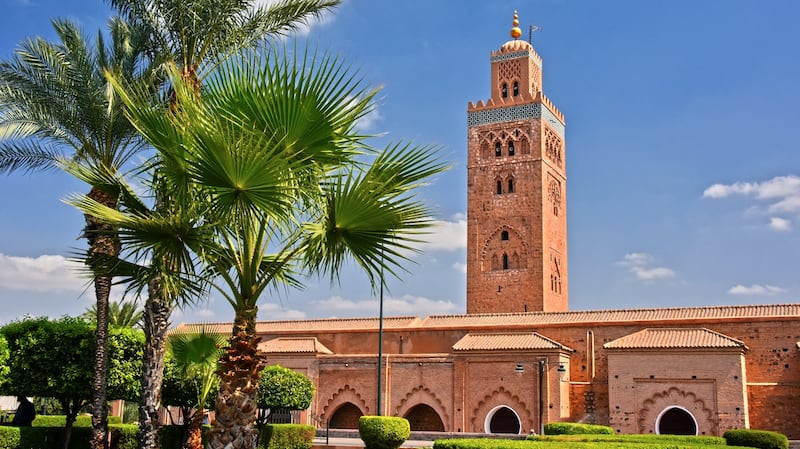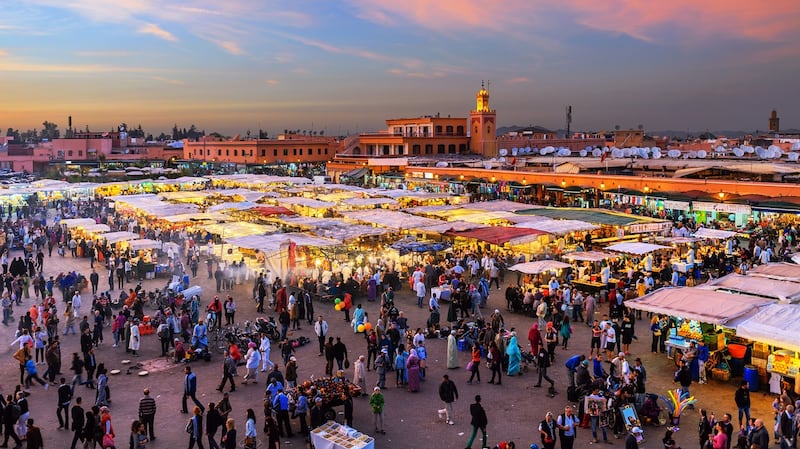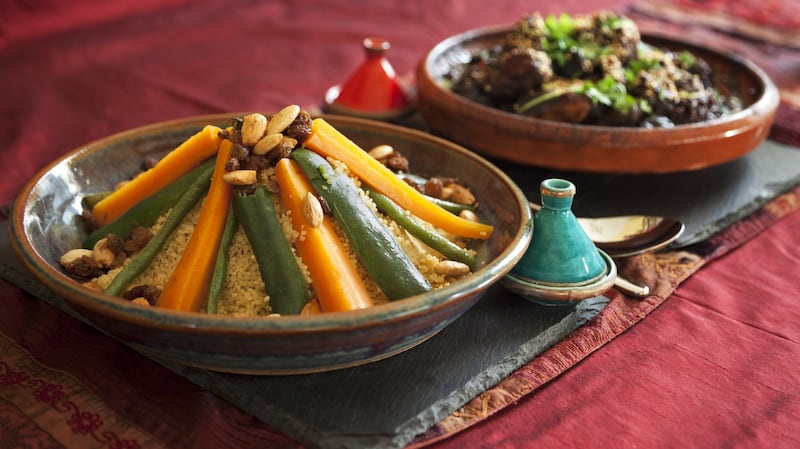Judy and Richard Flaherty are Americans who came to Galway, where they have relatives in Williamstown, in 1975. “Our two sons grew up here, and we all became Irish citizens,” Judy says.
“We were attracted to Morocco after our first short visit in 1991, appreciating the people, culture, and the winter sunshine.”
In 1998 Judy was offered a teaching post in the American School of Marrakesh and worked there for 13 years. "As Richard was retired, he came along too, and he enjoys the cafe life. Now we divide our time between Marrakesh and Galway."
Where is the first place you bring people when they visit Marrakesh?
The first place in Marrakesh that we bring people is the big square in the old part of the city, the Djema el-Fna. It is unique in the world, designated as a United Nations World Heritage site. It is filled day and evening with musicians, storytellers, henna designers, acrobats, and sellers of traditional goods and foods. Food stalls there have a range of tastes from sheep’s heads to freshly squeezed juices.

The top three things to do there that don’t cost money are ...
It doesn’t cost money to take a walk through the narrow streets of the souks (markets) or the medina (old town). These winding alleys are always busy with local people and tourists. Items on display range from small pots to large handwoven Berber carpets. It can be fun to get lost here; a local child will be happy to escort you back to the “Big Square” for the equivalent of 50 cent.
Strolling around the city walls gives a view of traditional neighbourhoods with their red clay exteriors. For the more energetic, walk the full 15km-plus perimeter of the medina walls. From anywhere in the city you can view the snowcapped Atlas mountains, 40km away, visible year round under a clear blue sky.
When you need some calm time, find a bench in the public parks of the Koutoubia, Jardin Harti, or the Cyberpark, all oases of ancient olive trees, date palms, and subtropical plants in the centre of the city.

Where do you recommend for a great meal that gives a flavour of Marrakesh?
A great Moroccan meal is available for a reasonable price at the Amal Centre, a women’s co-operative restaurant and training centre for unemployed women. They also have a Saturday buffet of local specialities which is popular with Moroccan families. Typical foods served include couscous, tagine, and bastilla. For a luxury meal, try Yacout restaurant in the medina, with its unusual interpretation of Moorish architecture and seven-course dinners.
Where is the best place to get a sense of Marrakesh’s place in history?
For a sense of history, walk around the Koutoubia Mosque, the highest structure in the city, built in 1170, and still in use. Visit the Saadian Tombs ancient royal burial site, and the surrounding 16th century buildings. The Medersa Ben Youssef, which was the original Koranic school gives a good sense of history with its many rooms with the original furnishings still in place.

What should visitors save room for in their suitcase after a visit to Marrakesh?
Bring home leather goods, shoes or anything from a key case to steamer trunk. They can all be made to your order. Or stock up on carved or inlaid wooden objects.
If you’d like to share your little black book of places to visit where you live, please email your answers to the five questions above to abroad@irishtimes.com, including a brief description of what you do there and a photograph of yourself. We’d love to hear from you.


















